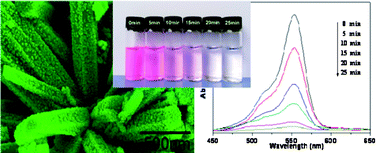A microwave-assisted rapid route to synthesize ZnO/ZnS core–shell nanostructuresvia controllable surface sulfidation of ZnOnanorods
Abstract
We demonstrate a new strategy for preparation of

* Corresponding authors
a
Zhejiang Key Laboratory for Reactive Chemistry on Solid Surfaces and Institute of Physical Chemistry, Zhejiang Normal University, Jinhua 321004, P. R. China
E-mail:
yonghu@zjnu.edu.cn
Fax: +86-579-82282595
Tel: +86-579-82282234
b
School of Materials Science & Engineering, Nanyang Technological University, Singapore 639798, Singapore
E-mail:
asxhu@ntu.edu.sg
We demonstrate a new strategy for preparation of

 Please wait while we load your content...
Something went wrong. Try again?
Please wait while we load your content...
Something went wrong. Try again?
Y. Hu, H. Qian, Y. Liu, G. Du, F. Zhang, L. Wang and X. Hu, CrystEngComm, 2011, 13, 3438 DOI: 10.1039/C1CE05111C
To request permission to reproduce material from this article, please go to the Copyright Clearance Center request page.
If you are an author contributing to an RSC publication, you do not need to request permission provided correct acknowledgement is given.
If you are the author of this article, you do not need to request permission to reproduce figures and diagrams provided correct acknowledgement is given. If you want to reproduce the whole article in a third-party publication (excluding your thesis/dissertation for which permission is not required) please go to the Copyright Clearance Center request page.
Read more about how to correctly acknowledge RSC content.
 Fetching data from CrossRef.
Fetching data from CrossRef.
This may take some time to load.
Loading related content
